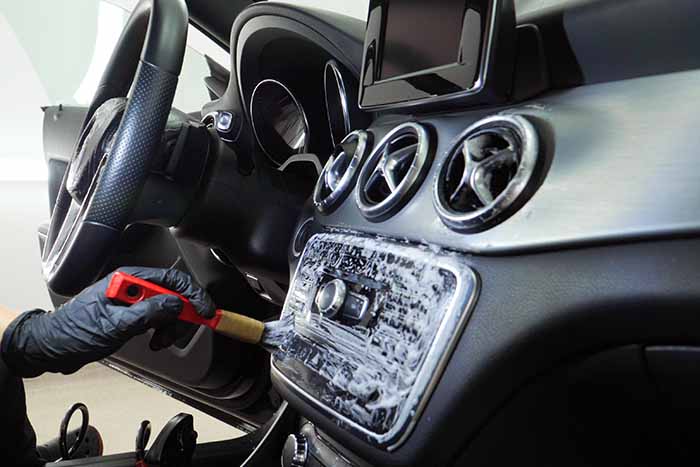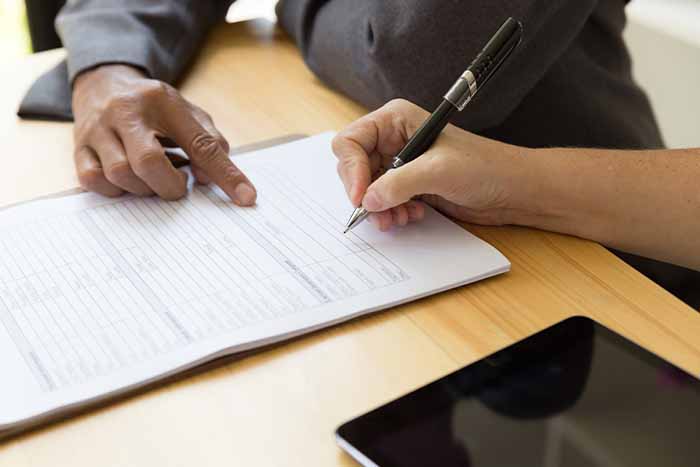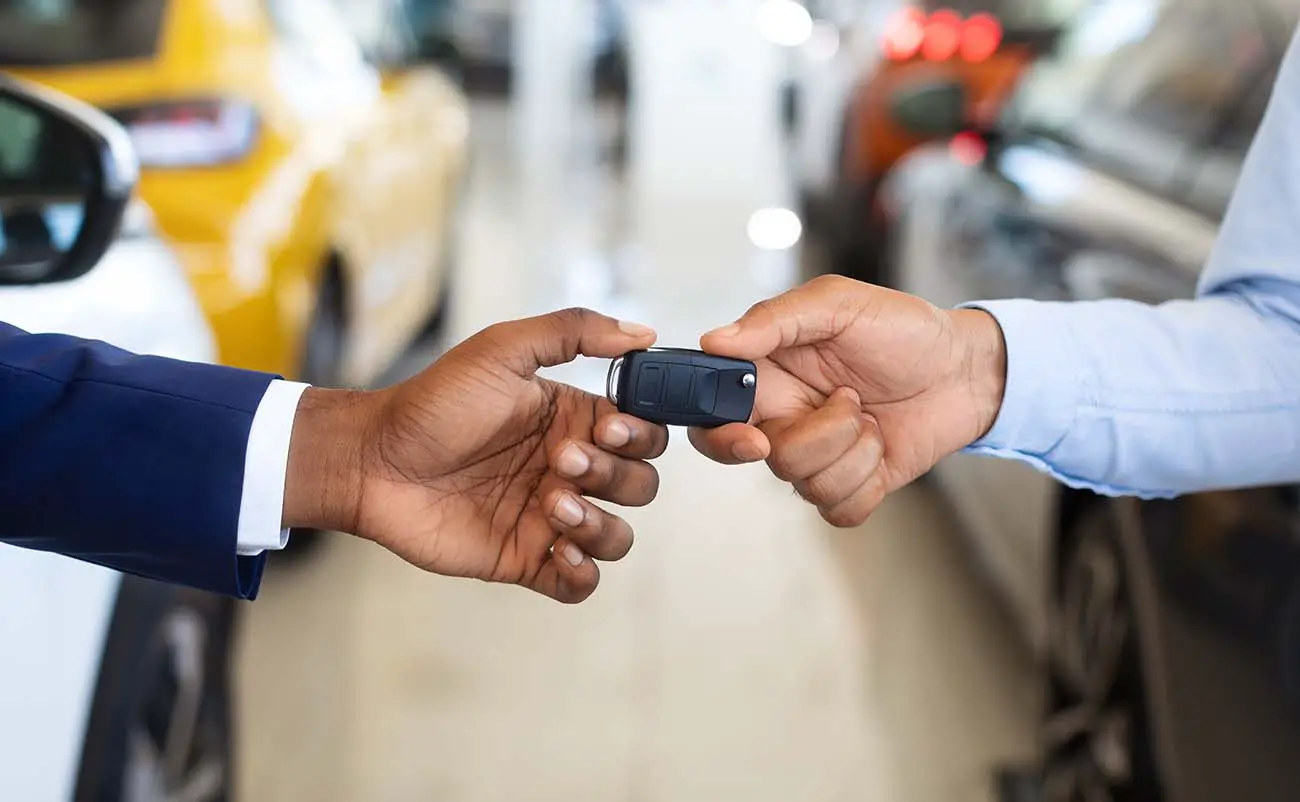Most people today trade cars every few years. The used car market is a vast industry, and most people trade in their old car when they get a new one. Dealerships make the process super easy, so why not go ahead and take care of everything at one time? You can get rid of your old car and get yourself a new vehicle within a couple of hours, and you can do it all at the same place. However, is trading your vehicle always the best decision? We are here to give you the steps you need to take to trade your current car, as well as discuss the pros and cons of trading in a vehicle.
Table of Contents
How To Trade In A Car In 5 Easy Steps

Trading a car is usually a straightforward process. There are a few things that you can do, however, to maximize your trade-in value. If you are thinking, “I want to trade in my car,” then keep reading. Following these steps will let you make sure that the trade-in process goes smoothly and that you get the most money for your trade.
#1. Get The Vehicle Ready
The first thing that you will need to do is get your vehicle ready to trade. When doing a trade-in, you usually don’t need to worry about paying for a professional detail job first. Unlike in a private party sale, the dealership will perform a thorough cleaning before listing the vehicle for sale. However, you still need to get the car to look presentable. When the appraiser at the dealership looks at your car, they want to see a vehicle in good condition. You should at least wash the car and clean the interior. If the dealership sees a car that could almost be immediately placed onto the lot, then they are more likely to make you a higher trade offer.
#2. Research The Trade-In Value
You need to have a general idea of your car’s value before heading to the car lot. Start by researching the value on reputable industry sites like Kelley Blue Book, Edmunds, or NADA. This will give you a trade-in range for your vehicle. When you ask for an appraisal on your trade-in, then you should already have an idea of what the offer should be. If the offer is extremely low, then you can use the data you’ve already gathered to make a counteroffer. Sometimes the dealer is unwilling to budge from their first offer. If that’s the case, don’t be afraid to walk away from a lowball offer.
#3. Get Multiple Offers
Remember that you don’t have to take the first offer you receive! One of the best ways to get the highest price for your trade is to get multiple offers. If the first car dealer you visit already has a car on the lot nearly identical to yours, your car likely won’t be as valuable to them. However, if the car dealership down the road is looking for a vehicle like yours, then they are bound to make you a higher trade-in offer. Keep shopping around, and you can select the dealer who makes the best offer. You might end up getting a much better price for your trade by visiting several different dealers. Plus, since you should already know the value of your car, you know which dealers are willing to give you a fair price. Now it’s time to pick out your new vehicle!
#4. Select Your New Car
Now for the fun part! You get to pick out your next car! Whether you want a Honda, Toyota, Chevrolet, BMW, or anything else, you should work with your dealer to find a car on their lot that you like. Just like you need to know the value of your trade-in before heading to the dealer, you should now research the value of the car you wish to purchase to make sure the asking price is in line with the market value. Once you find something you like, take it for a test drive. If you think it’s the one, then ask the dealer to work up a car deal on the purchase and trade. Now it’s time to fully examine the deal and come to an agreement.
#5. Close The Deal
This is often the most difficult part for many people. There are many moving parts to the car trade-in process. If you have an existing car loan or are getting a new car loan, that can also add complications. Make sure the dealer doesn’t try to pull a bait and switch on you. Settle the price for the new vehicle and the trade offer separately. Some dealers will lower the cost of the new car but then want to reduce their trade offer. Keep an eye on that to ensure you are getting the deal you both agreed to. Be sure to check all the numbers before signing the final paperwork. Sadly, some dealers will slip in extra fees or add-ons to bump up the price on trade-in deals, and many buyers never even realize it.
Once you’ve agreed on the final numbers and checked all the paperwork, then you can go ahead and sign the purchase agreement. Switch over any personal belongings from your old car into the new one, and you will be on your way! Have fun and enjoy your new ride!
Paperwork Needed For A Trade-In

To perform a trade-in, you will need your current vehicle registration and the car title. If you have an auto loan, then your lender holds the title. In that case, you will need to contact your lender to obtain the current loan balance or payoff amount. If you have positive equity in your vehicle, then you can use that amount as the down payment on your new car. If you have negative equity, then there are a couple of options.
If you have a great credit score and only a small amount of negative equity, then you can likely roll that amount over into the new loan. This will obviously make your monthly payments a little higher and might even raise the interest rate as well. If the lender is unwilling to finance the full purchase price plus the negative equity, then you will need to come up with the cash to pay off the negative equity. Doing so might be the only way to get approved for your new loan.
Aside from the financial paperwork, you will also need some identification, like a driver’s license. Another important piece of documentation that will be needed is your auto insurance information. Your lender will require this information as part of the loan process, and you will also need it when you register your new car.
Advantages Of Trading In A Car
One of the biggest advantages of trading in a car is the fact that it is easy! Selling a car yourself can be a hassle, but you can complete the trade process within a couple of hours. Most of the time, you don’t even have to clean your car first. Simply drive onto the lot, and the dealer will make you a trade offer within minutes.
Another big advantage of trading a vehicle is that it will save you some money on sales taxes. If you perform a trade when you purchase a new vehicle, then you’ll only pay tax on the difference between the purchase price of the new car and the trade value of your current vehicle. In some transactions, this can add up to several hundred dollars.
Finally, trading your car can be a great way to get out of a car loan, even if you are upside down on the loan. Many people wonder how to trade in a car that is not paid off. It’s quite simple, even if you are upside down. If you only have a small amount of negative equity, then most lenders will allow you to roll over a small amount of that into the loan for the new vehicle. You might not otherwise be able to get rid of your current car if you are unable to come up with that amount of cash. Rolling over that amount into the new loan allows you to get rid of your old vehicle and put yourself into a new car.
Cons Of Trading In Your Vehicle
While trading a vehicle has some advantages, there are also a few drawbacks to performing a trade. One of the largest disadvantages is that you are likely leaving money on the table. Trade offers are generally not as high as private party values. More than likely, you could sell your car through a private sale for more than you would receive on a trade-in. However, remember that selling your own vehicle takes quite a bit of time and effort. Dealing with potential buyers can also be frustrating when they string you along and then disappear.
Another con of trading your vehicle is that you might be limited in your new vehicle choices. If you select the dealer who offers you the most for your trade, then you will be limited to the cars on their lot when selecting a new car. If you have a large remaining balance on your current car loan, then you might be forced to buy a lower-priced new vehicle. If you are using only your current vehicle’s equity, then your current vehicle’s value has a large impact on the new car that you will be able to purchase.
The Bottom Line
Trading in a car is an easy process that most people choose to utilize when getting a new vehicle. Within a couple of hours, you can get rid of your old car and leave the lot in a brand new ride. There are a few steps that you need to take to get the highest offer possible on your trade. Make sure you clean your car before heading to the dealer and do your research on how much your car is worth before you start negotiating. If you follow the advice laid out here, then you will have a successful trade-in process, and you will get the highest trade offer for your vehicle.
Frequently Asked Questions
Is trading in a car worth it?
Most people believe that trading in a car is worth it. Even trading in a car with a loan is an easy process. It is true that the amount you receive on trade is probably less than the amount you would receive through a private sale. Most of the time, you can expect that amount to be anywhere from $1,500 to $3,500 less. However, most people agree that the ease of the trade-in process makes it worth it. Even though you could probably get more money, the private sale process is a lot of work. In addition, a private sale is not really an option if you have negative equity in your vehicle unless you have the cash to pay the difference.
How long should you keep a car before trading it in?
The answer depends on who you ask. On average, most people trade their vehicle every three years or so. If you are extremely budget conscious, then you probably keep your vehicle longer than this. Keeping your car longer will allow you to pay down your car loan more. If you completely pay off your loan before trading your vehicle, then your down payment on your new car will be more. From a financial standpoint, it usually makes sense to keep your car as long as possible before trading it in.
What should I do before trading in a car?
There are a few things you need to do before trading in your car. First, you should perform a simple clean-up on the vehicle. There is no need to pay for a professional detail job, but you should at least clean the car a little. Go ahead and research your car’s value so that you will be prepared for negotiations. Finally, locate your car title and registration. This will ensure that you have the necessary paperwork ready to close the deal when you come to an agreement with the dealer.

